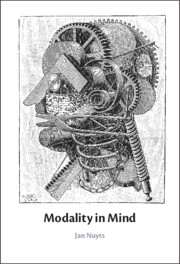Book contents
- Modality in Mind
- Modality in Mind
- Copyright page
- Contents
- Figures
- Tables
- Preface
- 0 Introduction
- 1 The Cognitive-Functional Approach
- 2 Qualifying States of Affairs
- 3 Modality Revisited
- 4 Attitudes
- 5 Beyond the Qualificational Hierarchy
- 6 (Inter)subjectivity, and More
- 7 Back to the Cognitive-Functional Approach
- 8 Conclusion
- References
- Person Index
- Subject Index
- References
References
Published online by Cambridge University Press: 25 March 2025
- Modality in Mind
- Modality in Mind
- Copyright page
- Contents
- Figures
- Tables
- Preface
- 0 Introduction
- 1 The Cognitive-Functional Approach
- 2 Qualifying States of Affairs
- 3 Modality Revisited
- 4 Attitudes
- 5 Beyond the Qualificational Hierarchy
- 6 (Inter)subjectivity, and More
- 7 Back to the Cognitive-Functional Approach
- 8 Conclusion
- References
- Person Index
- Subject Index
- References
- Type
- Chapter
- Information
- Modality in Mind , pp. 278 - 291Publisher: Cambridge University PressPrint publication year: 2025

